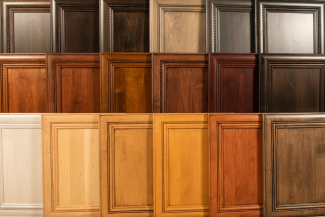

Yes! But you must follow a few simple rules to be sure you achieve the best possible finish.
Dry time is the recommended length of time between coats of product, often called recoat time, and cure time is the length of time recommended before subjecting your finished project to daily use. The following factors can influence your dry time:
The most critical part of finishing a piece of furniture happens before you open a can of stain or paint - it starts with the sanding. Sanding is critical to creating a smooth surface. Use the following sanding sequences for new wood:
For wood that is going to be painted, use 120-grit, followed by 150-grit.
Yes! But you must follow ONE simple rule to ensure the best possible finish: the underlying finish must be absolutely dry.
Haze (the technical term is blush) is caused by too many coats applied too quickly. A recoat time of 12 hours is not enough dry time when applying over an EXISTING finish. To remove the blush or haze, you can either wipe the area with a strong solvent, like xylene or lacquer thinner, or you can try sanding out the haze and then reapply the topcoat.
Liquid Oil-Based Wood Penetrating Stains made from the highest-quality oils, resins, and pigments to ensure your finishing project will be an easy and rewarding experience. These wipe-on stains are designed to be applied over raw wood surfaces.
Putty comes in two forms, pre-colored or as a stainable wood filler designed to fill minor imperfection such as nail holes, cracks, and gouges in the wood surface. Putty will display stain a bit differently than wood, so it is not a "perfect" fix, but a good one.
The goal is to get the best possible color match to either the color of the raw wood or the color of your existing finish.
You can use any oil-based finish but be sure to let the Tung Oil dry for at least 24 hours before applying.

Now more than ever, water-based stains offer a viable alternative to oil-based and other solvent-based stains.
Water-based stains penetrate deeper into wood than oil-based stains, resulting in deep, rich colors in only one coat. Manufacturers, professionals, and DIY users moving away from solvent-based products to water-based systems find immediate advantages...
No, because the particles can become embedded and rust. Some alternatives are Klingspor Synthetic Wool and Meka Mirlon 1500 synthetic wool.
Steel wool is still an acceptable option for oil-based finishes. GF recommends using "oil-free" 0000 wool from Liberon because it doesn't shred as easy as hardware store brands.